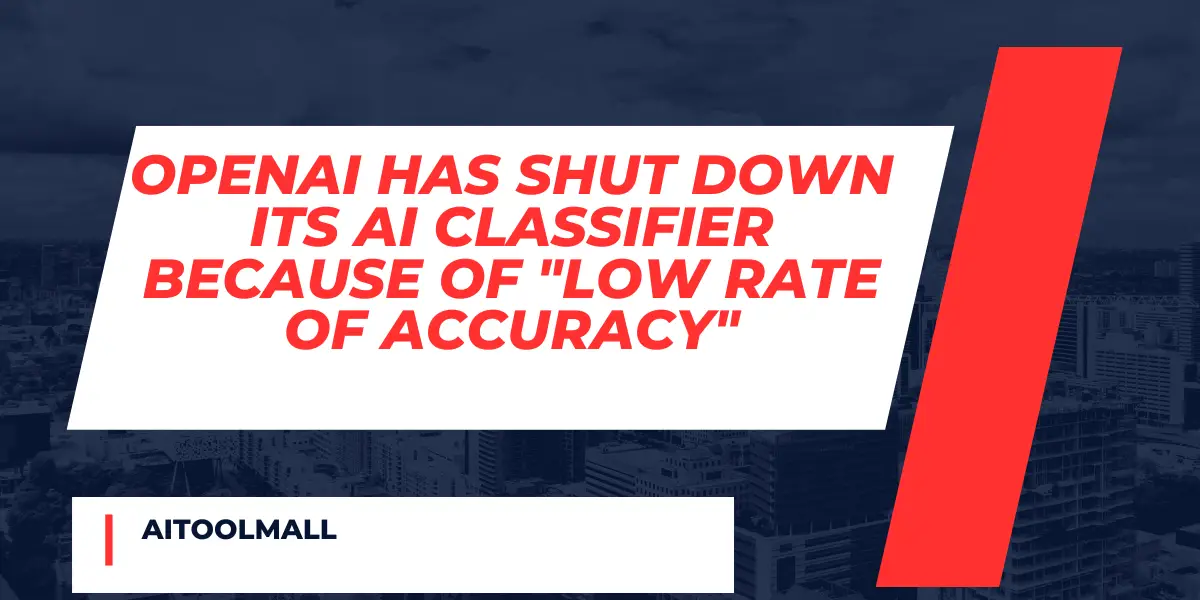OpenAI Has Shut Down Its AI Classifier Because of "Low Rate of Accuracy"

In a surprising turn of events, OpenAI, the artificial intelligence powerhouse, has quietly decommissioned its AI Classifier. The tool, designed to detect whether a piece of content had been created using generative AI tools like its own ChatGPT, was unplugged due to its low rate of accuracy.
Table of Contents
What is OpenAI’s AI Classifier?
Launched with the promise of preserving the sanity of educators and combating disinformation, the AI Classifier was expected to distinguish between text written by a human and an AI. However, even at its inception, OpenAI expressed concerns about the tool’s reliability, noting that it correctly identified AI-written texts from a “challenge set” just 26% of the time.
Read More About:How Accurate is Fireflies.AI? Is It Safe and Free to Use?
Why Has OpenAI Shut Down Its AI Classifier?
Despite its initial promise, the AI Classifier fell short of expectations. It was unreliable on text with fewer than 1,000 characters, often incorrectly labeling text written by humans as written by AI. Furthermore, classifiers based on neural networks performed poorly outside of their training data.
Read More About:Mastodon’s Fortunes Often Seem Tied to Twitter’s MisstepsIs
The Quiet Shutdown
The decision to drop the tool was not given much fanfare. Instead of a dedicated announcement, OpenAI updated the post which revealed the AI Classifier, stating that “the AI classifier is no longer available due to its low rate of accuracy.”
The Impact on Education
The decision to shut down the AI Classifier has significant implications for the education sector. Since the launch of ChatGPT, educators have been concerned about students using the chatbot to write essays and assignments, then passing them off as their own. The AI Classifier was seen as a potential solution to this problem.
Read More About:What does Seamless.AI Do and What does Seamless.AI Sell?
The Future of AI Detection
While the AI Classifier has been discontinued, OpenAI is not giving up on the concept entirely. The company is currently researching more effective provenance techniques for text and is committed to developing mechanisms that enable users to understand if audio or visual content is AI-generated.
Read More About:ChatGPT Android App: Install, Access, and Using Guide
Alternatives for OpenAI AI Classifier
The failure of the AI Classifier highlights the need for more robust tools to detect AI-crafted content. Other tools, such as GPTZero, continue to operate, but the industry needs stronger solutions to combat the potential misuse of AI chatbots.
Conclusion
The decommissioning of OpenAI’s AI Classifier underscores the challenges in the field of AI detection. As AI technology continues to evolve, the need for effective tools to detect and manage AI-generated content becomes increasingly critical. The industry will be watching closely to see how OpenAI and other AI powerhouses respond to this challenge.

